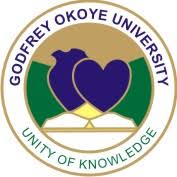Functions of Enzymes
The enzymes perform a number of functions in our body. These include:
- Enzymes help in signal transduction. The most common enzyme used in the process includes protein kinase that catalyzes the phosphorylation of proteins.
- They breakdown large molecules into smaller substances that can be easily absorbed by the body.
- They help in generating energy in the body. ATP synthases are the enzymes involved in the synthesis of energy.
- Enzymes are responsible for the movement of ions across the plasma membrane.
- Enzymes perform a number of biochemical reactions, including oxidation, reduction, hydrolysis, etc. to eliminate the non-nutritive substances from the body.
- They function to reorganize the internal structure of the cell to regulate cellular activities.
Enzyme Inhibition
Enzymes can be inhibited in it action both invivo and invitro.
Inhibition are reducing reaction rates via binding of non-substrate molecule.
Types and classes of inhibitors:
1. IRREVERSIBLE – inhibitor molecule can not be easily removed from enzyme
thereby reducing the number of working enzyme molecules.
i.e, enzyme is physically altered by binding of inhibitor – reducing its amount
alkylating agents like iodoacetamide (bind to -SH’s)
organophosphorous compounds- nerve gases (bind to SER)
some antibiotic drugs, such as penicillin form covalent link to active site
2. REVERSIBLE – enzyme activity may be restored by removing the inhibitor
and are thus treatable by M & M kinetics
2 major types of reversible inhibitions…
a. COMPETITIVE
b. NON-COMPETITIVE
COMPETITIVE INHIBITION…
inhibitor binds to E & forms an [EI] complex at the active site ecb 3.29*
inhibitor often looks like substrate… fools active site & binds
extent of inhibition is concentration dependent, [inhibitor is at fixed conc]
i.e., it can be overcome if [S] is very high, i.e., [S] >>> [I]
one classical example is malonic acid inhibition of SDH
easy to demonstrate is via Lineweaver-Burk plots*
µ shows Vmax is SAME, but Km value is increased
b. NON-COMPETITIVE INHIBITION…
inhibitor binds to E, forms an [EI] complex not at the active site
inhibitor often bears no structural relationship to substrate
removes a net amount of active enzyme, i.e., lowers total [E]
i.e., it can NOT be overcome, even if [S] is very high
easy to demonstrate via Lineweaver-Burk plots
µ shows Km is SAME & Vmax is different
Some Examples of Enzyme Inhibition:
1. Irreversible Enzyme Inhibition & Mechanism of Action of Some Antibiotics…
Antibiotic – a natural molecule (often made by bacterial cells) that can kill other
bacterial cells (& without hurting eukaryotic cells: they’re insensitive)
Penicillin – any one of a group of antibiotics derived from the fungus Penicillium. The action
of natural penicillin was first observed in 1928 by British bacteriologist Alexander Fleming,
and recognized as anti-bacterial by Howard Florey and others.
Penicillin is a substrate-like molecule* similar to bacterial peptidoglycans, which
naturally cross-link in the bacterial cell walls & favor rigidity.
penicillin works by IRREVERSIBLE binding to active site of enzymes that link
peptidoglycans; forms covalent link, removing enzyme, reducing
its Vmax; weakens bacterial walls eventually rupture & cells die.
2. Competitive Enzyme Inhibition and Mechanism of Drug Action
ACE Inhibitors – drugs that bind to the enzyme’s active site & reduces its activity
ACE – Angiotensin Converting Enzyme: a proteolytic enzyme that cuts Angiotensin I
a polypeptide of 10 amino acids to Angiotensis II (of 8 amino acids).
Angiotensin II promotes hypertension ( high blood pressure – HBP ) via vasoconstriction
in 1960’s John Vane discovered TEPROTIDE in Brazilian pit viper venoms, a
nonapeptide (9aa = Pyr-Trp-Pro-Arg-Pro-Gln-Ile-Pro-Pro) which functions as
ACE competitive inhibitor, by binding to the active site of the ACE enzyme.
Thanks
Dr.U. D Enyidi
Lecturer
